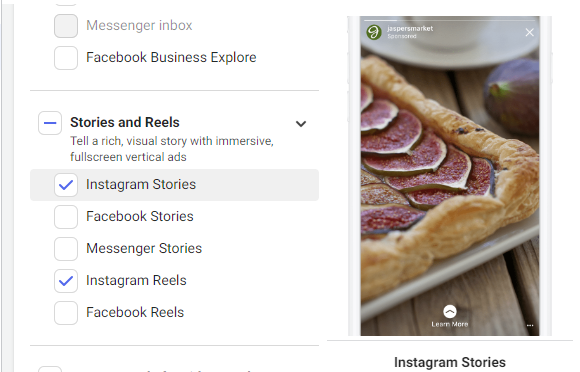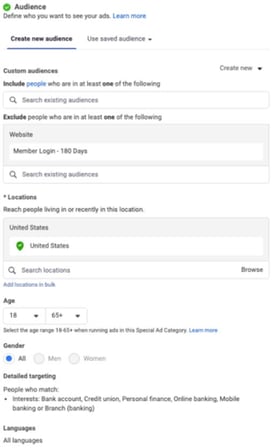
Social media advertising for credit unions has changed quite a bit over the past few years. Finding and converting your target audience on Facebook or Instagram at one point felt akin to shooting fish in a barrel; not only could advertisers tap into the demographic attributes and on-platform interests and behaviors provided directly by users, but Facebook’s partnerships with third-party data providers allowed advertisers even more opportunities to target exactly the right person with the right message.
All we, as advertisers, had to do was simply define the attributes most relevant to our target audience and let the platform do the rest!
Of course, it was too good to be true. In the face of growing privacy concerns, Facebook ended its relationships with third-party data providers and created the “Special Ad Category” policy, which had a nearly immediate impact on financial institutions advertising on the platform.
Intended to prevent discrimination, the policy states any advertiser promoting products related to credit, housing, or employment opportunities needs to mark their ads as such, which severely limits targeting opportunities for credit unions. This removes the capability to reach audiences by age or zip code–plus, there is a requirement to add a fifteen-mile radius around targeted cities or addresses. Facebook also recently disabled the ability to select “lives in” as a location setting, so all advertisers are now required to choose the more ambiguous “people living in OR recently in this location” option.
In addition, the impact of Apple’s iOS 14 changes has also affected who advertisers can reach on mobile devices. All apps within the Apple App Store will be required to utilize AppTrackingTransparency (ATT), which requests users’ consent to track their data and actions across apps and websites.
In other words, Apple now requires all apps in their App Store to allow users to opt out of tracking and data collection. This limits our ability to target folks based on their interests and behaviors while using mobile device apps.
Other recent changes include the inability to create lookalike audiences from your own members list to find similar people or being able to utilize audience expansion.
So, what does this mean for credit unions who still want to utilize social media advertising? This article outlines three excellent tactics for improving your credit union’s social media advertising strategy.
Tactics for Improving Your Credit Union’s Social Media Advertising
- Utilize Interest-Based Targeting Attributes
- Leverage First-Party Data for Targeting
- Consider Diversifying on Other Platforms for Social Media Advertising
1. Utilize Interest-based Targeting Attributes
Although still limited for advertisers within the Special Ad Category, Facebook still allows advertisers to target folks who have shown interest in specific financial products, like “home equity loan”, “home equity line of credit”, “first-time home buyer”, and more. We also recommend getting innovative with more creative interests like “Trulia” and “Zillow “to get in front of people who are shopping for houses or “vacation rental” for someone who may be interested in funding an upcoming trip with a personal loan or new credit card.
Leverage placement targeting and creative design that will speak to your target audience. The example shown below highlights the ability to choose specific placements for your ads to ensure you meet your target audience at the right time.

For example, an ad run exclusively in Instagram Stories and Reels featuring fun, animated creative and using images/videos of Gen Z-aged folks will be much more compelling for a younger demographic. We run campaigns this way for credit unions that partner with universities to target incoming students.
The inverse is also true; when we ran a credit card campaign promoting a travel rewards offer, excluding Instagram led to 75% reach in 25 to 54-year-olds, our target audience for this campaign.
The creative below illustrates how to leverage creative design that will speak to your target audience - this creative was used for a Facebook Ad campaign targeting growing families seeking a great auto loan rate for a newer, larger vehicle.

2. Leverage First-party Data for Targeting
Facebook allows advertisers to upload their own lists of first-party data (email addresses, phone numbers, etc.) that can be matched with users’ data to find and target the exact people they want to reach. This is ideal for remarketing efforts to your current members, improving your share of wallet, or promoting a limited-time offer. The creative below shows an effective way to promote a limited-time offer on a rewards credit card to your existing members.

In a separate example, our credit union client used their own data to generate a list of folks who may be good candidates for a short-term line of credit. Essentially, they took the targeting into their own hands! Using this method, we generated 3 new accounts for just $200.
Leveraging first-party data gives you a significant advantage in understanding your target audience. You can use this information to target a hyper-specific group of people or a more general audience like what’s shown below.

3. Consider Diversifying on Other Platforms for Social Media Advertising
There are still many platforms that allow the use of demographic and third-party data in targeting, like LinkedIn, Pinterest, Spotify, Pandora, and CTV streaming services.
While Google (who owns YouTube) also limits targeting options for financial institutions, Google-based campaigns are not nearly as impacted by iOS 14. Google's stack of first-party apps is considered in line with Apple's policy requirements, so they were able to avoid displaying the prompt asking for tracking permission.
As is the case with every digital advertising tactic, understanding your long-term goals, member lifetime value, and average cost-per-acquisition is vital in determining a comfortable budget for your campaigns. Starting out with a limited budget (even $10 per day!) on Facebook is okay - just make sure you regularly dive into your data to figure out what’s working and what could be improved.
Test audiences, test creative, test landing pages, test placements - collecting this level of detail will help you make better, data-driven decisions for your social media campaigns.
For more on digital advertising for credit unions, check out: The Most Effective Digital Strategies For Credit Union Advertising.
Note: This post was originally published on September 3, 2021, with updates on November 1, 2023.






Agree, disagree, or just have something to add?
Leave a comment below.